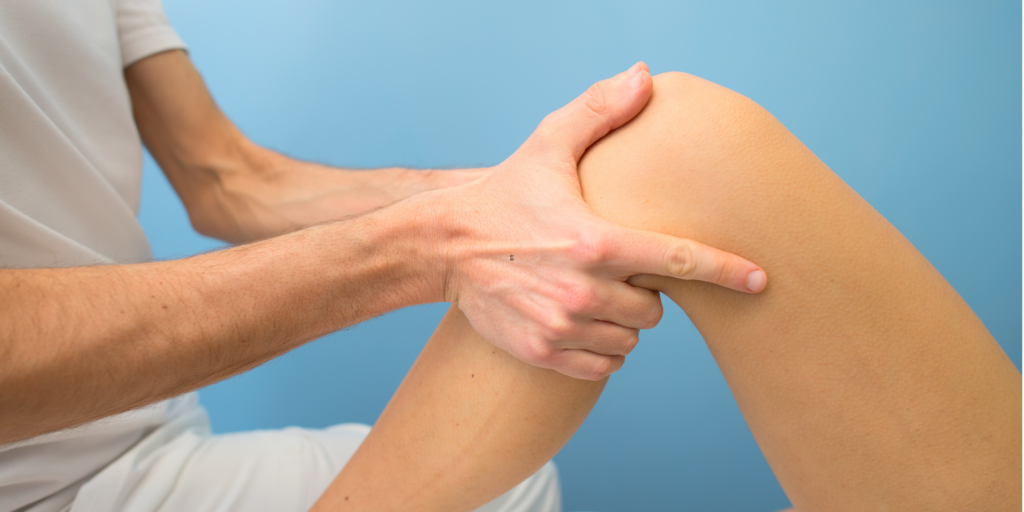Some special tests can be modified to be done via telehealth. Below we have provided photos and instructions as guidance on how to perform these special tests.
Knee Special Tests
Modifications to common special test manoeuvers for a virtual knee examination.
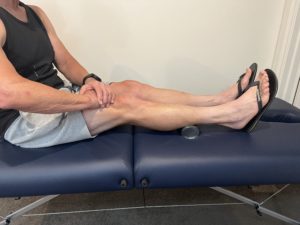
The Lever Test
The lever test for anterior cruciate ligament integrity. A soup can is placed beneath the calf, and the distal femur is pushed downward with both hands. A positive test result is an objective and visual finding in which the patient’s heel does not rise off of the table.
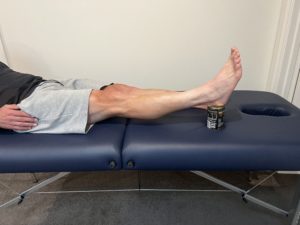
The Bounce Test
The bounce test with a soup can placed beneath the heel. The patient is asked to slightly bend the knee and then allow it to bounce down so that it is completely straight, repeating this several times quickly.
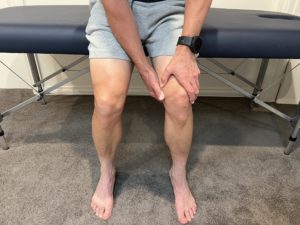
Patella Apprehension Test
Patellar apprehension test with both thumbs used to apply a lateral directed force on the medial facet of the patella (can also be done with the ankle of the affected leg crossed over the contralateral ankle).
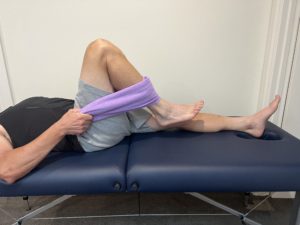
Hyperflexion Test
Hyperflexion test with a towel wrapped around the anterior ankle, which is used to pull the knee into hyperflexion. The towel is allowed to relax and then pulled back again several times quickly.
Modified from:
Lamplot, J., Pinnamaneni, S., Swensen-Buza, S., Lawton, C., Dines, J., Nawabi, D., Young, W., Rodeo, S., Taylor, S. (2020). The Virtual Shoulder and Knee Physical Examination. Orthopaedic Journal of Sports Medicine, 8(10), 2325967120962869.
Other Knee Special Tests
| Test | Technique | Condition |
|---|---|---|
| J-sign | While seated and facing the camera, patient actively flexes and extends the knee as physician observes patellar motion | Patella tracking |
| Single leg squat | While standing and facing the camera, patient squats on one leg for three or four repetitions as physician observes knee alignment and balance (can use chair/wall for support if required) | Pelvic instability (stance leg), lower extremity function and strength |
| Thessaly test | While facing the camera, patient stands on one leg; the supporting leg is flexed 20 to 30 degrees and trunk is rotated back and forth (can use chair/wall for support if required) | Pain with a mechanical click or catching sensation suggests meniscal pathology |
Modified from:
Bunt CW, Jonas CE, Chang JG. Knee pain in adults and adolescents: the initial evaluation. Am Fam Physician. 2018;98(9): 576-585. Accessed August 25, 2020. https://www.aafp.org/afp/2018/1101/p576.html
Karachalios T, Hantes M, Zibis AH, et al. Diagnostic accuracy of a new clinical test (the Thessaly test) for early detection of meniscal tears. J Bone Joint Surg Am. 2005;87(5):955-962.
Next – The Hip
